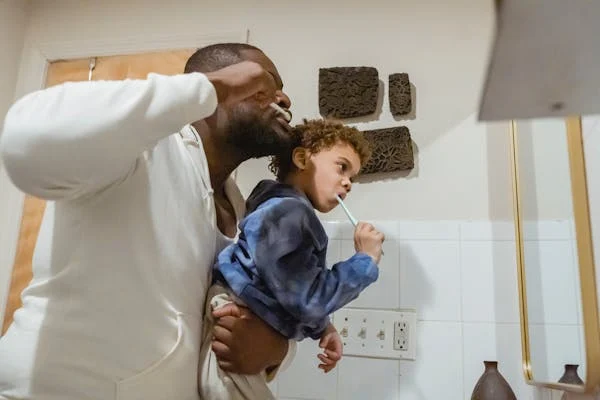In 2025, staying ahead in oral health is more crucial than ever as new dental trends are reshaping family dental care. With innovations in preventive dentistry and a growing focus on children’s dental health, families can look forward to more personalized and effective dental care. From cutting-edge technologies to holistic approaches, these trends promise to revolutionize how we care for our teeth and gums.
Join us as we explore the future of family dental care and how you can benefit from 2025 dental innovations.
The Rise of Preventive Dentistry
Emphasizing Oral Health Education
In 2025, oral health education is becoming a cornerstone of preventive dentistry. Understanding the importance of good dental habits early on can significantly impact children’s dental health. Educational programs aim to teach families how to maintain optimal oral health through proper brushing techniques, flossing, and dietary choices. Schools and community centers are increasingly hosting workshops and informational sessions to spread this knowledge.
Furthermore, technology is now playing a vital role. Interactive apps and online resources provide accessible dental care information, making it easier for parents and children to learn together. Dentists are also dedicating more time to educating their patients during visits, emphasizing prevention over treatment.
By fostering a culture of awareness and responsibility, these educational efforts are setting the foundation for healthier smiles and reducing the incidence of dental issues across all age groups in the family. Families are empowered to take charge of their dental health, ensuring lasting benefits.
Breakthroughs in Early Detection Technologies
Advancements in early detection technologies are significantly enhancing preventive dentistry in 2025. These innovations allow for the identification of dental issues before they develop into more serious problems, thus improving family dental care. One such technology is the use of advanced imaging tools, like digital X-rays and 3D scans, which provide detailed views of oral structures. These tools help dentists detect cavities, gum disease, and other conditions at their earliest stages.
Additionally, the integration of artificial intelligence in dental diagnostics is streamlining the process. AI-powered software can analyze images and patient data to predict potential dental health trends, offering tailored preventive advice. Salivary diagnostics is another breakthrough, allowing non-invasive tests to detect markers for oral diseases. These technologies ensure that children’s dental health is monitored closely, reducing the risk of complications.
By prioritizing early detection, families can maintain better oral health and avoid costly treatments in the future.
Innovations in Family Dental Care
2025 Dental Innovations for Children
In 2025, dental innovations are transforming the way we approach children’s dental health, making care more effective and less intimidating for young patients. One significant advancement is the introduction of dental lasers for treating cavities. These lasers offer a pain-free alternative to traditional drills, reducing anxiety and discomfort for children during dental visits.
Additionally, smart toothbrushes equipped with sensors and apps are gaining popularity. These devices provide real-time feedback on brushing techniques, helping children develop better oral hygiene habits. Wearable technology is another innovation, with devices that monitor oral health indicators and alert parents to potential issues.
These cutting-edge tools empower parents to take a proactive role in their child’s dental care. By embracing these 2025 dental innovations, families can ensure their children’s smiles remain bright and healthy throughout their development.

Latest Dental Trends in Treatment Options
The latest dental trends in treatment options are revolutionizing how families receive care in 2025. Minimally invasive procedures are becoming the norm, focusing on preserving as much of the natural tooth structure as possible. For instance, resin infiltration techniques can treat early-stage cavities without drilling. Furthermore, biocompatible materials are gaining traction, offering safer and more natural-looking restorations. These materials blend seamlessly with natural teeth, enhancing both function and aesthetics.
Clear aligners continue to evolve, providing an effective alternative to traditional braces for correcting misaligned teeth across all ages. Additionally, advances in sedation dentistry are making it easier for patients with dental anxieties to undergo necessary procedures comfortably. These treatment options not only improve clinical outcomes but also enhance the overall patient experience.
By staying informed about these latest dental trends, families can make educated decisions about their oral health, ensuring that everyone in the household benefits from the best available care.
Enhancing Children's Dental Health
Customized Care Plans for Young Patients
In 2025, customized care plans are becoming integral to enhancing children’s dental health. Recognizing that each child has unique dental needs, dentists are now developing personalized treatment strategies that account for individual risk factors and lifestyle habits. These care plans often include tailored preventive measures, such as fluoride treatments or sealants for children prone to cavities. Nutrition counseling is also a component, guiding families toward dietary choices that support oral health. Additionally, regular monitoring through scheduled check-ups ensures that any emerging issues are addressed promptly.
Technology aids this customization as well; digital records and health tracking apps allow for a comprehensive view of a child’s dental health over time. This individualized approach not only improves the effectiveness of care but also fosters a positive attitude toward oral health in young patients. By investing in customized plans, parents can ensure that their children receive the best possible dental care, laying the foundation for lifelong healthy habits.
Promoting Healthy Habits at Home
Promoting healthy habits at home is crucial for enhancing children’s dental health in 2025. Families play a vital role in establishing routines that support strong teeth and gums. Encouraging children to brush twice daily with fluoride toothpaste and to floss regularly can make a significant difference in preventing cavities. Parents can lead by example, turning oral hygiene into a shared family activity.
Additionally, limiting sugary snacks and drinks helps protect against tooth decay. Incorporating dental-friendly foods, such as fruits, vegetables, and dairy, into meals can further bolster oral health. Educational tools like interactive apps and games make learning about dental care fun and engaging for children. These resources reinforce good habits and allow kids to track their progress. Regular family discussions about the importance of oral health also contribute to a positive mindset. By fostering an environment that prioritizes dental hygiene, parents can help ensure that their children maintain healthy smiles for years to come.
Make Oral Health a Family Priority
As we move forward into 2025, it’s clear that the landscape of oral health care is rapidly evolving with exciting advancements and new approaches. These shifts offer promising opportunities for families to enhance their dental well-being and embrace healthier lifestyles. Let these innovations inspire you to prioritize oral health every day. Whether it’s implementing preventive measures, utilizing new technologies, or establishing healthy habits at home, the steps you take today will shape your family’s smiles for the future.
Start a conversation with your dentist about the latest trends discussed here and find out how your family can benefit from these cutting-edge solutions.
Take action now to ensure a brighter, healthier smile for every family member. Commit to making oral health a priority, and watch as your family’s dental wellness thrives in the years to come. We cannot wait to see your smile in our clinic in 2025!


